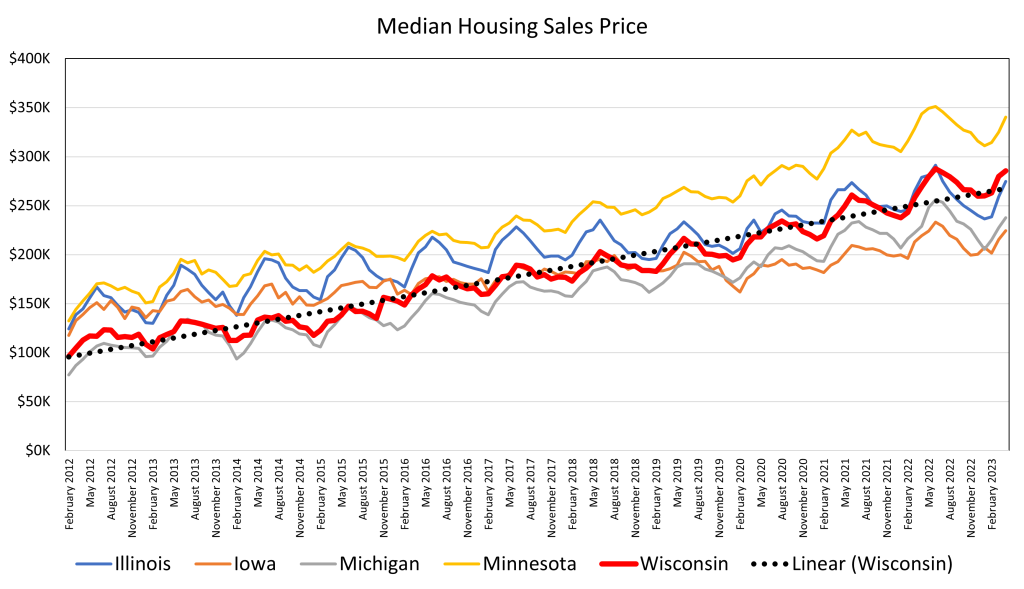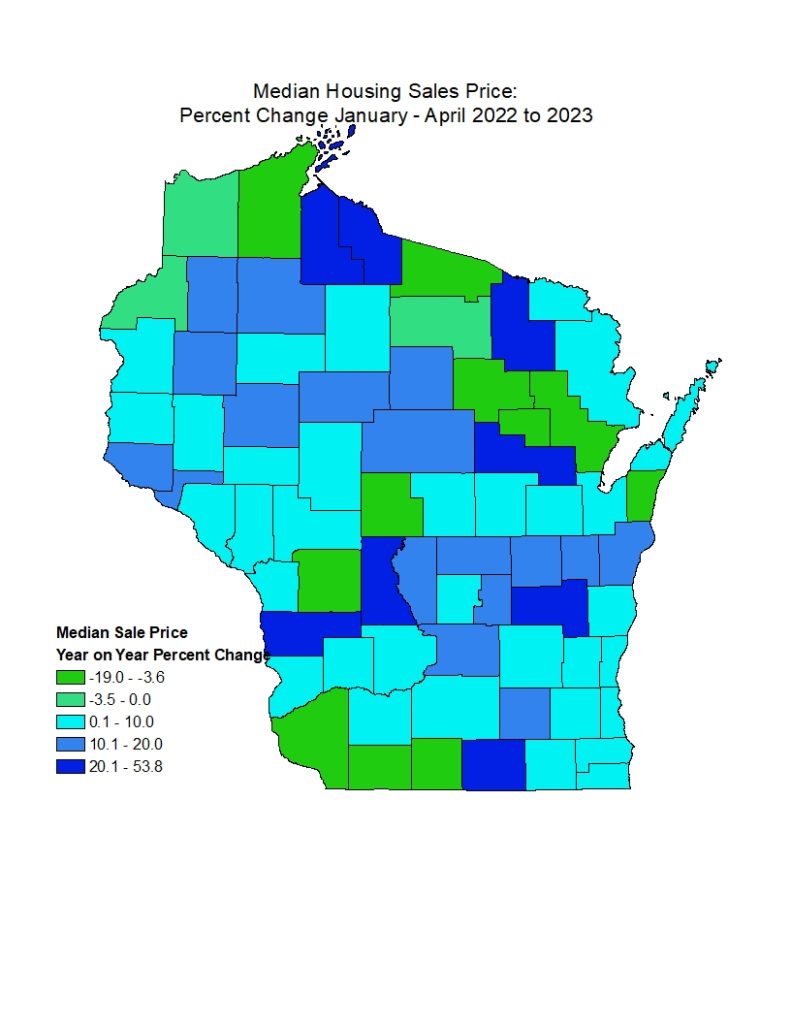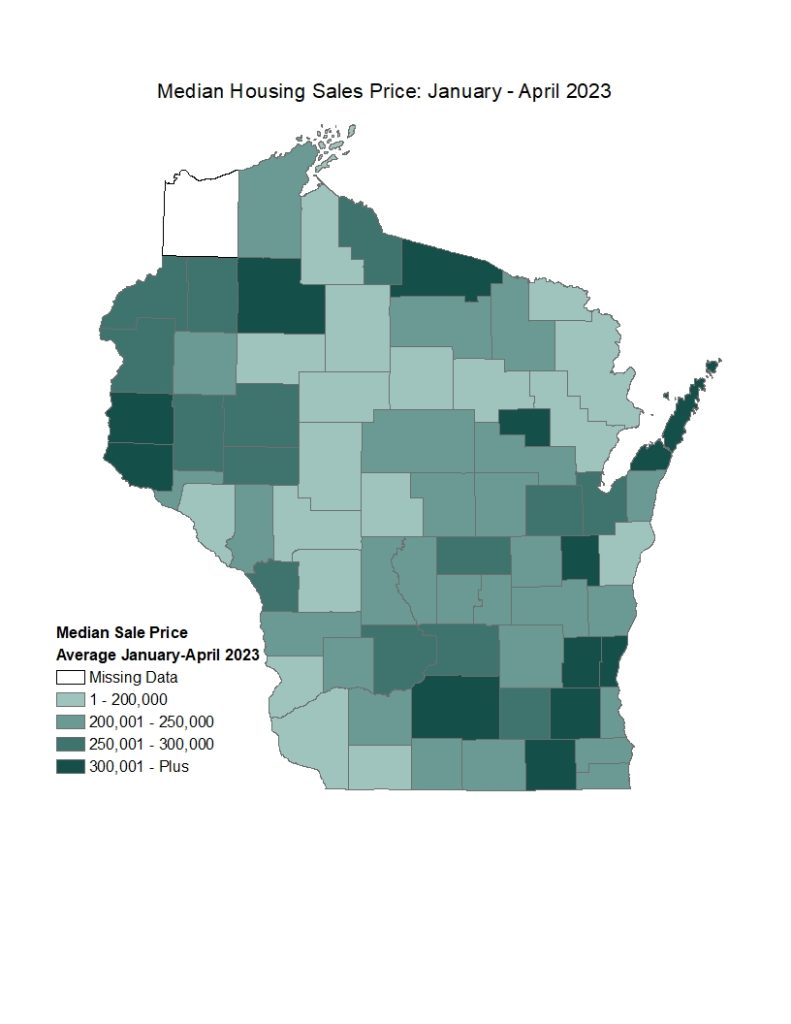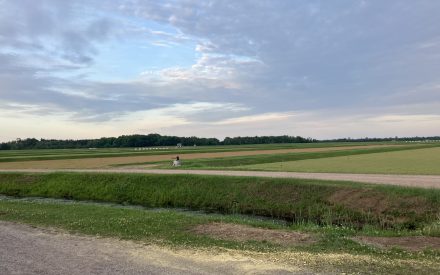(Image Source: Blake Wheeler / Unsplash)
Wisconsin IDEA
Insight • Data • Economics • Analysis
Between 2012 and 2023 the Wisconsin Median Home Sales Price Increased 153.1 percent
Across Wisconsin, communities have consistently identified four areas of concern: (a) broadband internet, (b) childcare, (c) labor supply, and (d) housing. While these issues are interconnected and reinforce one another (e.g., the lack of affordable quality childcare constrains labor force participation rates, which in turn hinders the ability of childcare providers to hire workers), most communities tend to approach each problem separately. Many Wisconsin communities came concerned over housing through discussions of the lack of adequate labor supplies. For example, communities ask why people are not moving into their communities to take advantage of employment opportunities and the lack of quality affordable housing came to the forefront. The shortage of housing is not unique to Wisconsin and is indeed a national concern.
Simply put, the supply of new housing has not been keeping pace with growing demand since the Great Recession. This places upward pressure on housing prices, both for potential homeowners and renters alike. By tracking the median sales price of housing over time, one can see strong growth since the end of the Great Recession. For instance, the Wisconsin median sales price in April 2012 was $112,800 and for April 2023 (the most currently available data) it was $285,500, an increase of 153.1 percent. For the homeowner, this represents a remarkable increase in wealth but for potential buyers, particularly first-time buyers, this increase creates financial stress.
Figure 1 – Median Housing Sales Price, 2012-2023

The strength of the Wisconsin housing market is unique when compared to our neighboring states. Over the 2012 to 2023 period average month-to-month growth rates were 0.89 percent for Wisconsin compared to 0.72 percent for Illinois, 0.56 percent for Iowa, 0.75 percent for Minnesota, and 0.95 percent for Michigan. In 2012, only Iowa had a lower median sales price compared to Wisconsin, but by 2023 only Minnesota has median sales prices higher than Wisconsin.
Over the past year, the upward pressure on Wisconsin housing prices remains strong despite significant increases in home mortgage interest rates. From 2012 through 2019, the average 30-year mortgage rate was 3.97 percent, then declined to a low of 2.65 percent in January 2020 (which contributed to the record demand for housing) to an average of 6.42 percent from January to June 2023. The year-over-year change in average median sales price from January-April 2022 to January-April 2023 declined for only 13 Wisconsin counties and increased in 58 counties (data is missing for Douglas County). The largest increases were in Iron County, which saw an increase of 46.4 percent going from $171,125 to $250,500, and Shawano County going from $156,725 to $241,113, a 53.8 percent increase. Green County experienced the largest slowdown with a median sales price in January-April 2022 of $272,838 to $221,000 in January-April 2023, a 19 percent decline. The causes for continued housing shortages are multi-dimensional.
Many current homeowners with relatively low mortgage interest rates are hesitant to place their homes on the market and face higher interest rates. Builders find that the costs of new construction make building what might be referred to as starter homes unattractive. Moreover, the profit margins in higher-end homes are simply too attractive to contractors. Beyond the costs of building materials, the shortage of skilled construction workers (e.g., carpenters, plumbers, electricians) is contributing to not only constraints on new construction but also underlying costs. The current “housing crisis” is a national one and efforts to address this issue at the local and regional level will be challenging.

















